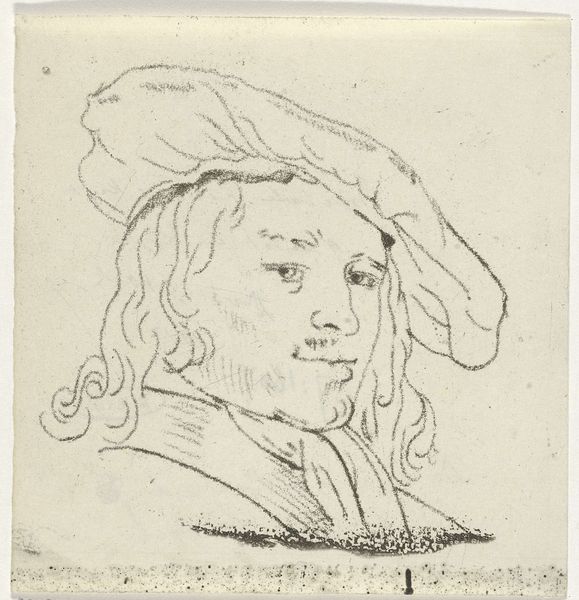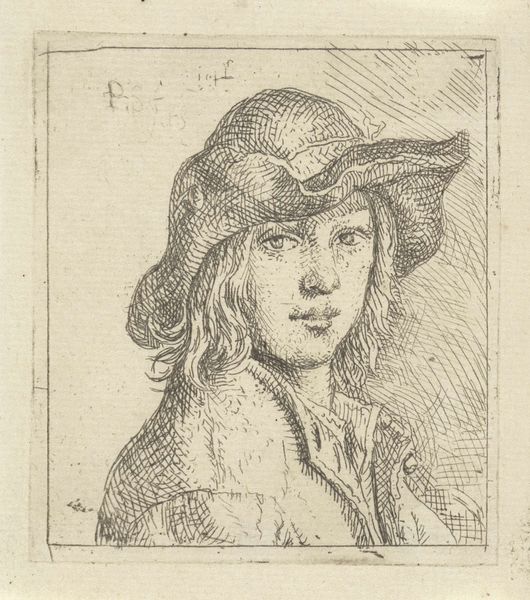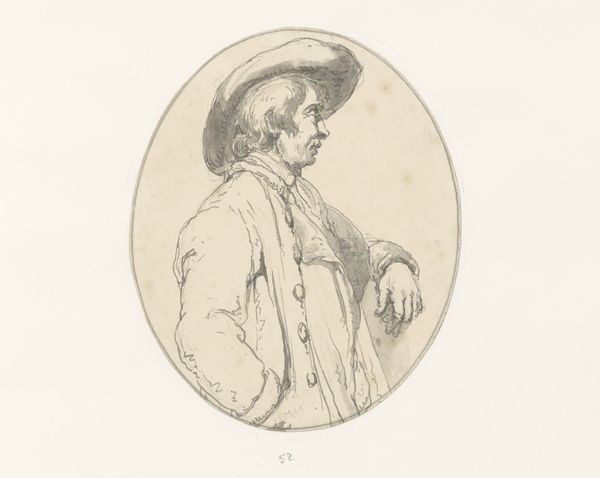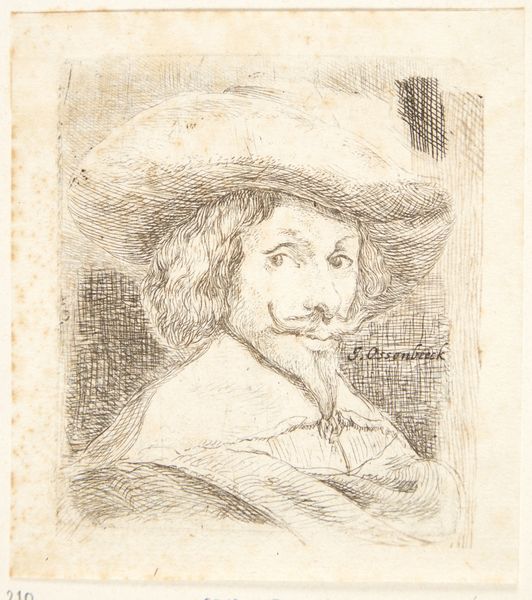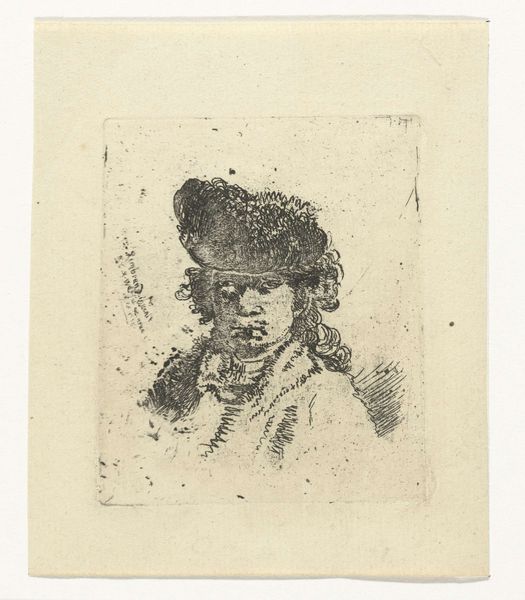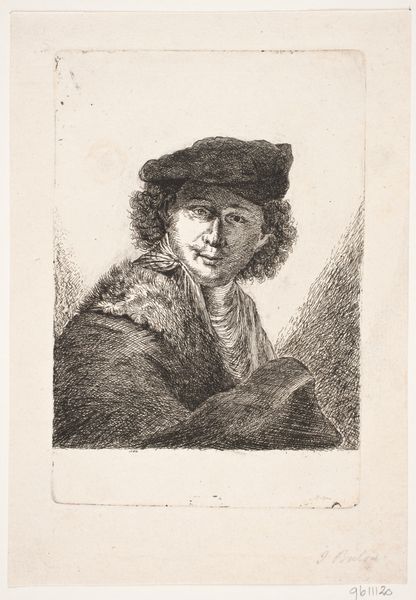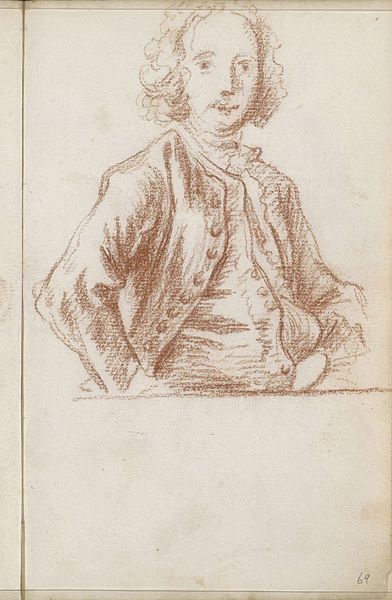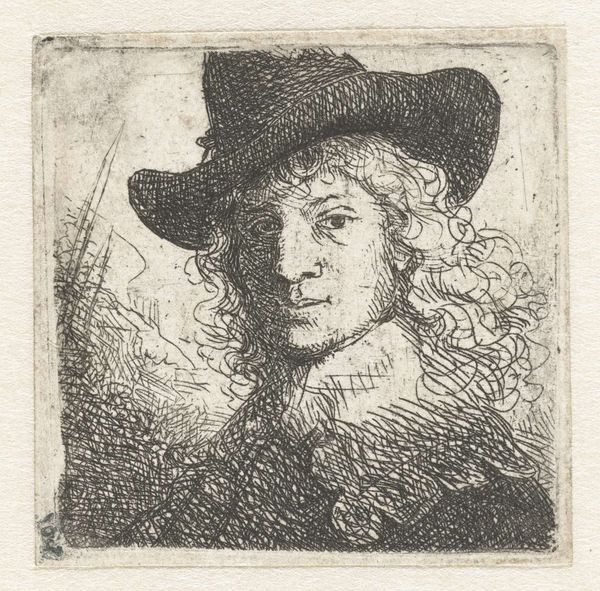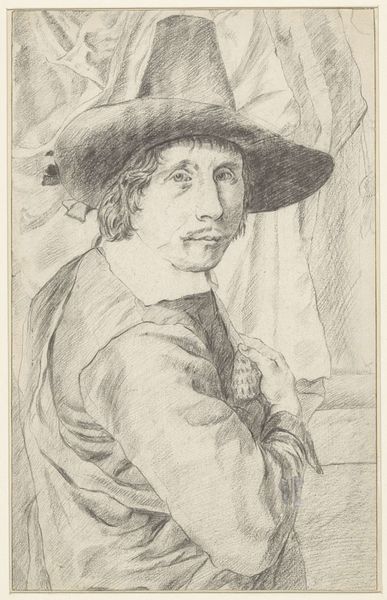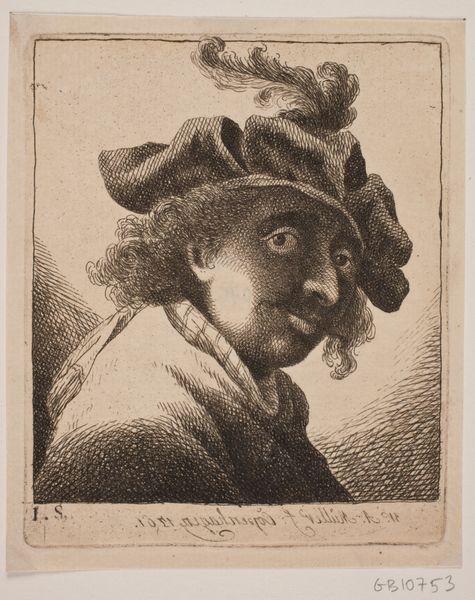
drawing, graphite
#
portrait
#
drawing
#
pencil drawing
#
15_18th-century
#
graphite
#
portrait drawing
Dimensions: height 65 mm, width 63 mm
Copyright: Rijks Museum: Open Domain
Curator: Looking at this drawing, it's easy to get lost in the subtlety. We're standing before a suspected self-portrait by Jacques Kuyper, created sometime between 1771 and 1808. It's a study in graphite, a dance of pencil on paper. What are your initial thoughts? Editor: My first thought? Melancholy. The downward tilt of his head, that faraway look... it’s a study in quiet introspection. There's a wistful air about him, despite the jaunty hat with its jaunty plume. Curator: Jaunty is one way to put it. Hats of this style are markers of the era, aren't they? Perhaps even indicative of a particular social class. Here, that hat feels like it weighs down his gaze. I mean, do you think that hat hides something—a mood? An ambition? Editor: Absolutely. Headwear, in portraits, often signifies aspiration or social standing, of course. But it can also operate as a mask. Note how softly the graphite is applied around the hat. It has its sharp lines that fade around the figure, creating that feeling of an added weight. It makes you wonder what’s beneath the surface. He has quite the stare with these piercing, intent eyes that follow me a bit. Curator: And look at the economical use of line! A few strokes define the fall of his coat, the curve of his cheek. It's an incredible capturing of a fleeting moment. Editor: It is. The medium adds a level of accessibility, don't you think? The relative intimacy of the drawing style, graphite on paper makes us think it should be the place of something personal. But these things were typically practice for grand oil paintings. Curator: That’s so interesting. Knowing its context as prep, rather than product, certainly sheds a different light. Is it that he captures the subject’s, in this case his own, essential qualities? Editor: Perhaps that the rawness gives the essential spirit a touch of intimacy in comparison to oil paint on a giant canvas, right? As an artist looking at himself, did he seek an honest portrayal? What aspects did he emphasize, conceal? Food for thought… Curator: Indeed! This quiet piece asks loud questions, doesn't it? I appreciate the feeling I get when I study it: a closeness I do not always associate with a "self-portrait" from the era. Editor: For me, it speaks to how images can reflect more than what is immediately visible, encapsulating both personal narrative and collective cultural values, all within a few delicate lines.
Comments
No comments
Be the first to comment and join the conversation on the ultimate creative platform.

